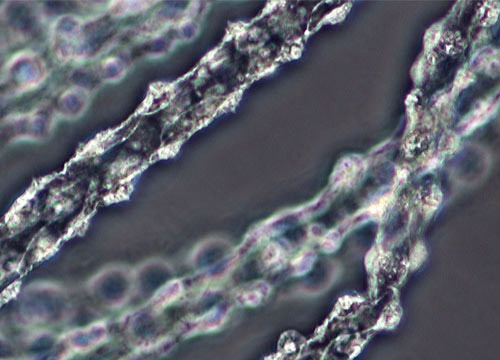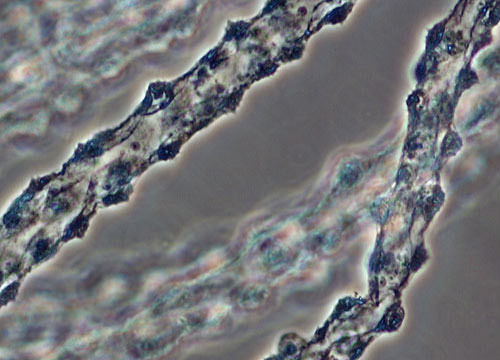Budding Hydra
In Greek mythology, the Hydra was a many headed water serpent with deadly breath. The second task of Hercules was to kill this beast, a difficult feat since each time one head was chopped off two more grew in its place. Although hydras, which belong to the phylum Coelenterata, are not quite so dreadful, their appearance and reproductive ability are reminiscent of the mythological creature of the same name.
 Negative
Negative
 Positive
Positive
Positive
Hydras are freshwater relatives of saltwater anemones and corals that live in the open sea. Their bodies are tubular, translucent, and may vary in color. Hydras attach to rocks by a single foot on one end. The other end has a small opening, which can ingest nutrients and expel wastes, surrounded by many stinging tentacles. The tentacles are used in a variety of ways to stun, capture, and maneuver prey. Because their bodies are very elastic, hydras can catch and eat animals much larger than themselves.
Negative
Although unable to produce new heads, as did the foe of Hercules, hydras can create small replicas of themselves. Hydras produce more hydras through a process called budding. In budding, small hydras, complete with tentacles, grow on the side of a larger hydra and then break off to form new individuals. Hydras can, however, also reproduce sexually. Males produce sperm, which are released into the water near a female to fertilize her eggs. Fertilized eggs become embryos that attach to the side of the female. After the tentacles and mouth are developed, the newly formed hydras then separate from their mother and live independently. Hydras produced sexually are generally more resilient and have a better chance of surviving cold winters than those that developed through budding.













